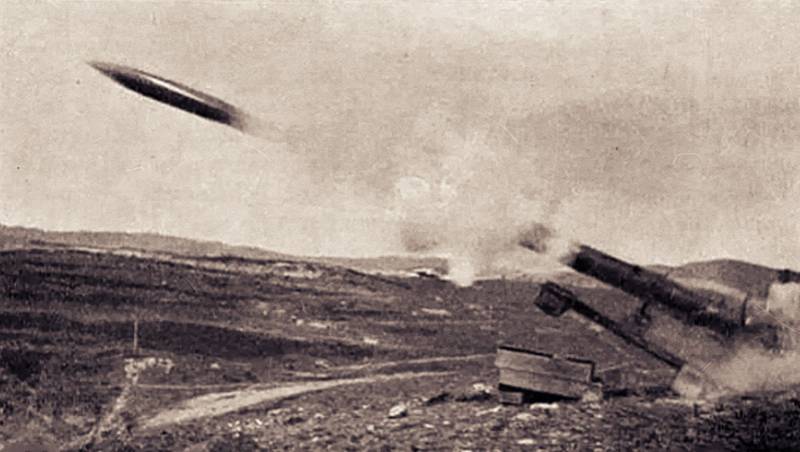The world's first mortar: how it came to be

Mortar – weapon, without which almost no high-intensity conflict has occurred since the First World War.
Meanwhile, it was invented a little earlier, during the siege of the Port Arthur fortress by the Japanese army in 1904. Then, during the assault, the Japanese broke through the first defense redoubts and began to dig in directly near the Russian positions.
As a result, the enemy found himself in the so-called “dead space”, which was not covered by our large-caliber artillery.
As a solution to the problem, the midshipman of the 1st Pacific Squadron fleet Sergei Vlasyev suggested that Lieutenant General Roman Kondratenko hit the Japanese with mounted fire. For this purpose, it was planned to use pole ship mines that had been removed from service.
The development of the appropriate weapon was entrusted to Captain Leonid Gobyato.
The latter somewhat improved the proposed concept and created a weapon for firing aerial mines weighing up to 15 pounds of pyroxylin based on a “stripped-down” 75-mm howitzer.
However, this design did not last long. Within a month and a half, the first mortar was created, which was based on a 47-mm Hotchkins naval gun mounted on a wheelbase (light carriage). In addition, special ammunition was manufactured for the new version of the weapon.
The mine, filled with 6,2 kilograms of pyroxylin, was made of sheet iron and had the shape of a truncated cone. The pole on which the warhead was located was inserted into the bore all the way to the wad.
At the same time, a sliding over-caliber stabilizer was located on the pole. When fired, the latter slid along the pole and was ultimately fixed on a thickening in the tail of the mine.
The Gobyato gun had a firing range of 50 to 400 meters at an angle of 45 to 62 degrees.
The results of firing from the new weapon were amazing. Of the four ammunition fired from the world's first mortar, three fell into Japanese trenches.
Information